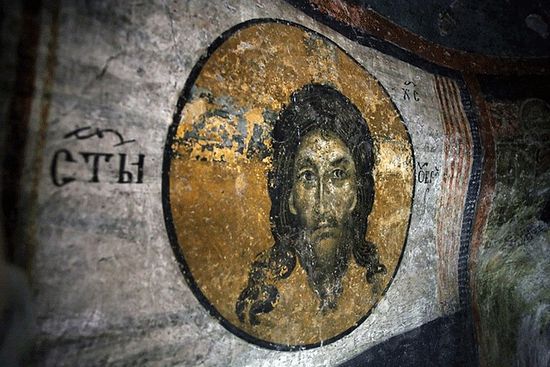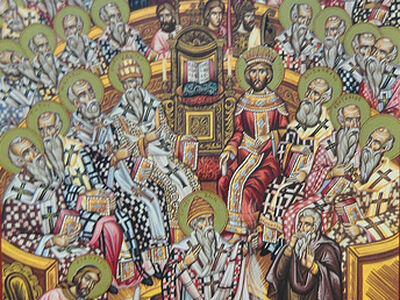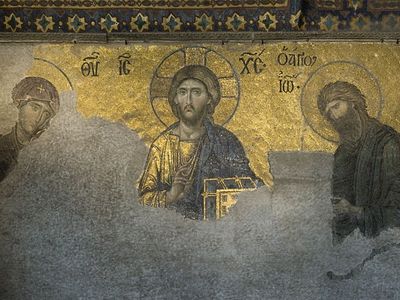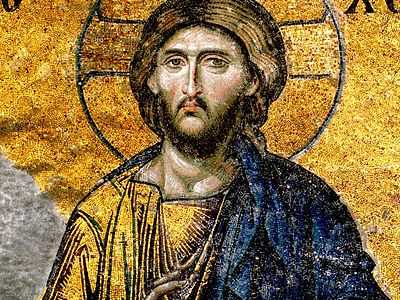One way of defining “Christology” is simply, “talking about Christ.” In this elementary sense, of course, Christians have been “doing Christology” from the very beginning—from the very minute they were faced with the question,
“What think ye of the Christ?”
The earliest Christians, in talking about Christ—interpreting Christ—did so in the biblical descriptions and images familiar to them, particularly from many prophecies of Holy Scripture: Messiah (and, therefore, King), Seed of David, Son of Man, Suffering Servant, Prophet, Light unto the Gentiles, and so on. Other formulas expressive of the faith derived from the circumstances of Jesus’ life: , for example, born from a Virgin, proclaiming peace, doing good, suffering under Pontius Pilate. “Teacher” (Rabbi) seems to have been one of the earliest titles ascribed to Christ.
Formulas such as these were assumed into the Apostolic Corpus, in due course, through which they found their way into the Christology of the Church Fathers. Thus, the bishops at Nicaea, while they debated at length the term homoousios, had no trouble with
“suffered under Pontius Pilate.”
In the mid-second century the writings of St., Justin Martyr testify to the persistence of the more primitive expressions of Christology. He declared, for instance,
“the Word, who is the first-born (proton gennema) of God, born (gegennesthai) without sexual intercourse, and he, Jesus Christ, our Teacher, was crucified and died, and rose again, and ascended into heaven” (First Apology 21.1).
In this text, we observe, the historical facts relative to the Incarnate Word are arranged as components in a creedal narrative. The life enshrined in this account, says Justin, fulfilled sundry prophecies in the Hebrew Scriptures. He continues,
“In these books of the prophets we found Jesus our Messiah (ton hemeteron Christon) foretold as coming forth (paraginomenon), born (gennomenon) from a Virgin, attaining manhood, and healing every disease and every sickness, and raising the dead, and being hated, and unrecognized, and crucified, and dying, and rising again, and ascending into heaven, and both being and being called (onta kai keklemenon) the Son of God” (31.7)
Inasmuch as it echoes primitive Christological expressions, two features of this rich text solicit particular attention:
First, we observe that Justin maintains a formula that expresses the Son’s “becoming” (paraginomenon) human; he preserves this primitive Christological expression, to which St. Paul himself was heir (Romans 1:3; Galatians 4:4; Philippians 2:7).
Second, it is significant that the title “Son of God” appears at the end, not the beginning, of Justin’s creedal summary. Although it is clear that he believes Jesus already to “be” (onta) the Son of God, Jesus is “called” the Son of God by reason of the various experiences of his life, death, Resurrection, and Ascension.
That is to say, Justin’s Christological assertion here expresses the more primitive quality and form preserved in Romans 1:4, according to which Jesus was
“appointed Son-of-God-in-power (tou horisthentos Huiou Theou en dynamei) by reason of the resurrection from the dead.”
Justin repeats some of these creedal formulations in his Dialogue With Trypho the Jew, where he speaks of
“this very Son of God, who is the first-born of every creature, and who, born from the Virgin, became (genomenou) a man capable of suffering (pathetou . . . anthropou), and, because of your nation, was crucified under Pontius Pilate, died, rose from the dead, and ascended into heaven” (85.2).
Except for Justin’s quotation from Colossians 1:15 (“the first-born of every creature”), all the expressions contained in this creedal text seem to have been common among Christians from the most primitive days—the pre-Pauline period—of the Church. The only new feature within this formula, Justin’s reference to “your people,” was prompted by the polemical intent of his work, and that feature, too, derived from the distant memory of Christian tradition.
In these very early expressions of the faith we already discern the elements that became central in the later Christological development, particularly the identity of Christ as both eternal (“being”) and historical (“becoming”), as both God and man.




